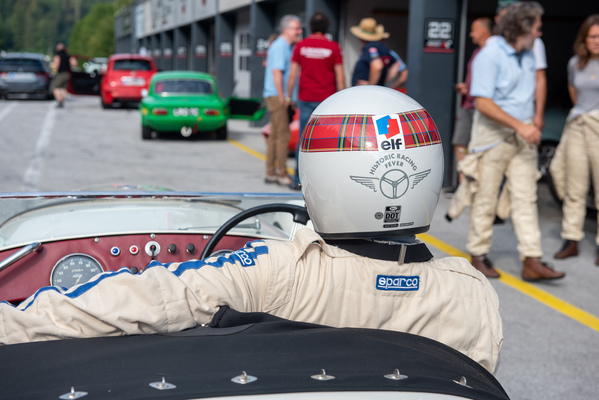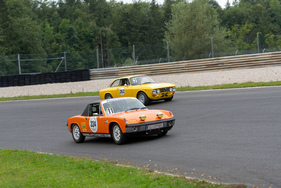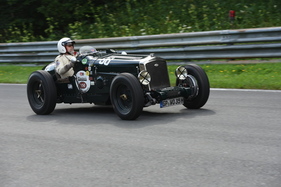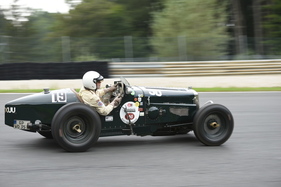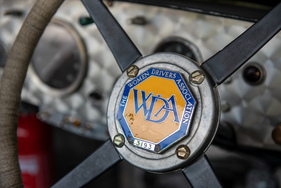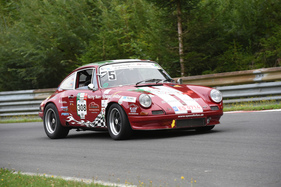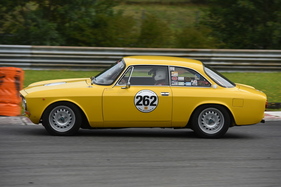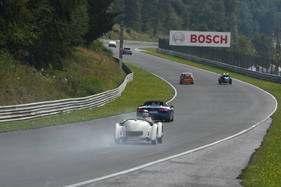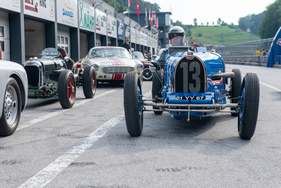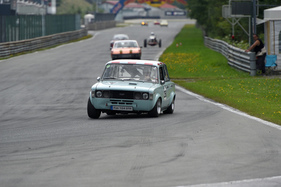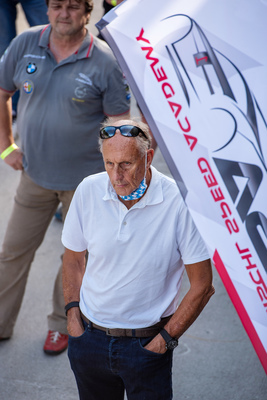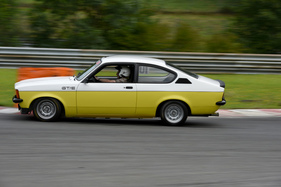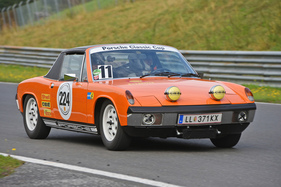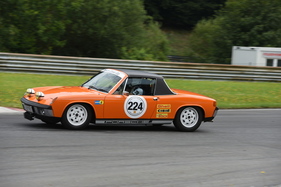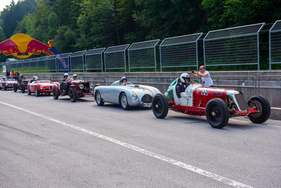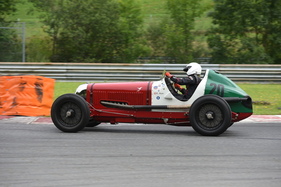If you want to drive a vehicle as part of a classic car event this year, it's not easy. One event after another has been canceled and fallen victim to the coronavirus. But there are (fortunately!) exceptions. One of these was the Reischl Speed Academy as part of its Track Day. The venue for the perfectly organized one-day event was the Salzburgring.

The organizer, Winfried Reischl, is celebrating the 30th anniversary of the Reischl Speed Academy in 2020. He offered 30 historic racing cars and classic cars the opportunity to take part in the track day.
Salzburgring since 1969
Austria is fortunate to have two permanent race tracks. In addition to the Red Bull Ring in Styria (Zeltweg), there is also the slightly shorter Salzburgring. This circuit was opened on September 21, 1969 with the 1st International Prize of Salzburg. Just under a year later, on August 30, 1970, the unforgettable Jochen Rindt drove his last Formula 2 race here. Six days later, he was killed in an accident during practice for the Formula 1 Italian Grand Prix in Monza.
The Salzburgring is nestled in the so-called Nesslgraben, around 12 km from Salzburg. The track is 4255 meters long and has six right-hand bends and an equal number of left-hand bends. Famous passages include the slightly banked 180-degree Nockstein bend and the never-ending paddock bend. The circuit is popular with spectators because of its large natural grandstands, which allow a good view of the racing action.
For the past 16 years, the Salzburgring has been home to the well-known classic car event "Sounds of Speed". This year, "Sounds of Speed" wanted to try something new and move to the Red Bull Ring in Spielberg. But then came Corona and with it the end of Sounds of Speed 2020.
Small but mighty
The RSA Track Day was a lot smaller than Sounds of Speed and not just a classic car event. Due to the coronavirus, no spectators were allowed. The organizer had put together three groups of 30 vehicles. Two groups with more or less current vehicles and one group which was reserved exclusively for historic racing cars and classic cars.
Of these 30 cars, about a dozen were pre-war vehicles. The remaining cars were built well into the 1970s. In the meantime, noise restrictions at race tracks have (almost) become the norm. The Salzburgring is no exception.

The participants were already made aware of the limit of 98 db in the announcement and again at the drivers' briefing. The noise, or sound, depending on the opinion, was measured at various points on the track and offenders were waved off.
Big age difference
At the beginning, some participants were unsure whether the age and horsepower difference in this classic car group was not too great. Above all, the braking performance of pre-war cars and youngtimers is very different. Pre-war cars, some of which still had cable-operated drum brakes, were known to have to "hit the brakes" much earlier than comparatively modern designs with four disc brakes.
In the drivers' briefing beforehand, the organizers once again deliberately pointed out this difference to the drivers. The riders then impressively demonstrated on the course that they had listened carefully to the briefing. This difference in deceleration was taken into account by driving with foresight and consideration.
On the other hand, some of the drivers of "newer" classic cars must have been surprised at how fast the pre-war racing cars flew around the course - and in some cases even passed them.
Interesting field of classic cars
The pre-war cars included well-known brands such as Bugatti, ERA and Maserati, but also lesser-known names such as Jowett and Veritas.
Most of the post-war vehicles were from the 1960s and 1970s: Porsche 911, Alfa Romeo GT Veloce, Chevrolet Stingray, BMW 2002, Mazda RX2 or De Tomaso Longchamp to name but a few.
Sun in the morning, rain in the afternoon
The restriction to three groups had the great advantage that the drivers had plenty of time to drive. Before the lunch break, each group completed three runs in 20 minutes. The weather was good and the temperatures very high. The race continued after the lunch break, but dark clouds in the sky heralded a change in the weather.
At 2 p.m., just as the classic cars were starting their 30-minute run, light rain began to fall. At the beginning, the precipitation evaporated on the hot asphalt so that the drivers were able to complete the run without any problems. The rain then became heavier, causing many drivers to load their vehicles back onto the trailer earlier than expected.
Others, however, were not impressed by the wet weather and unpacked the impact wrenches to convert the race cars to rain tires. They now had ample opportunity to feel their way to the limit on an almost empty race track.

The RSA Track Day 2020 finally gave classic car drivers, but also drivers of modern cars, another opportunity to get a taste of racing air.




